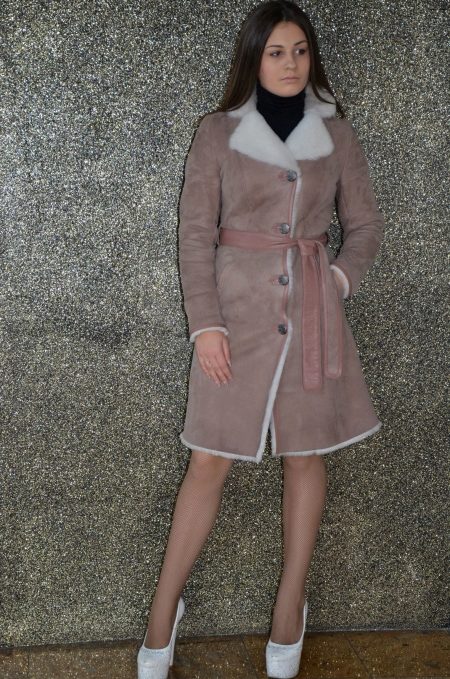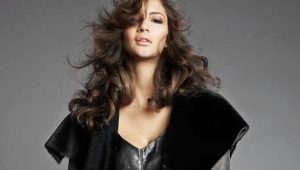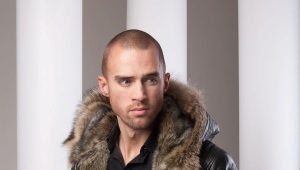Warm sheepskin coat

When looking for outerwear for winter, fashionistas consider many options. Down jacket, coat, fur coat, or maybe a sheepskin coat? Yes, it's easy to get confused.

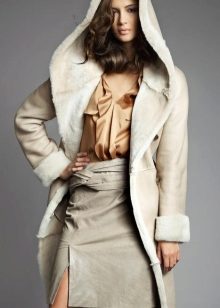
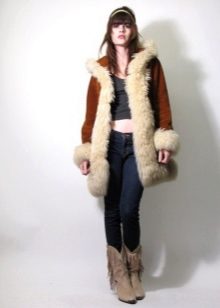
Features and Benefits
Women's sheepskin coats have become popular relatively recently. There are many reasons to praise this model.


Pluses of a sheepskin coat:
- natural hypoallergenic materials;
- the presence of both light models for the off-season and warm ones for frosty weather;
- luxurious appearance;
- the ability to combine with various styles of clothing.
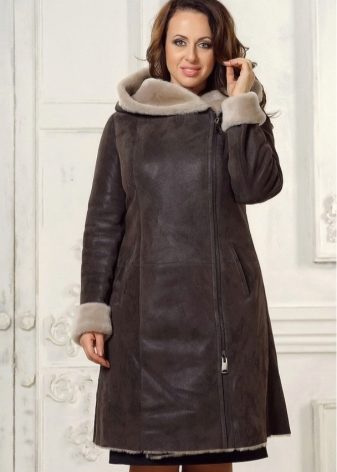
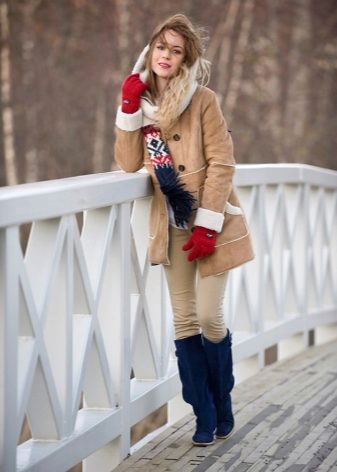
A sheepskin coat made of natural fabrics is a very warm outerwear. You can wear it, starting from 0 degrees and ending with -15. It is possible to wear at a lower temperature, because the factor of the level of physical activity is of great importance. If the sheepskin coat is artificial, the temperature regime from +5 to -5 will be the maximum for it.
Varieties
There are many types of sheepskin coats. Natural sheepskin coats are in special demand, because their appearance is distinguished by presentability, and thermal properties are at their best. The lightest of them is a goat sheepskin coat, and the most frost-resistant is sheepskin.
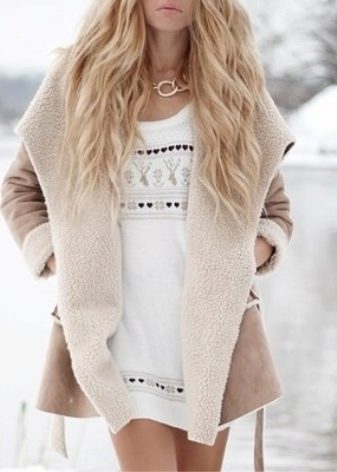
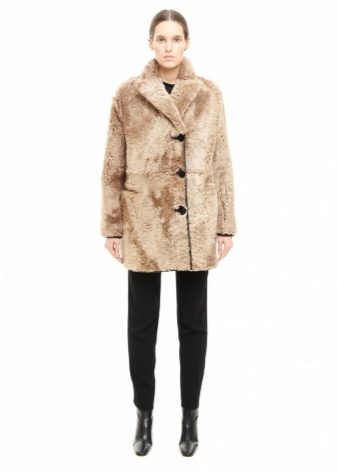
One of the most popular materials for sewing sheepskin coats is Australian sheepskin. “Fur velor” is made from it. The peculiar dressing of the skins makes such a product soft and very pleasant to the touch.However, care for such a sheepskin coat will have to be more painstaking and thorough.
If, when choosing a sheepskin coat for yourself, you want to purchase the most durable model, take a closer look at the sheared fur. Karakul, sheepskin or goat - it doesn't matter, each of them, when sheared, is able to serve for several seasons longer. Sheared fur does not fade or roll up, however, it will be inferior in terms of thermal properties.
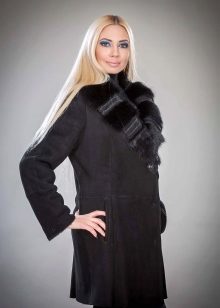
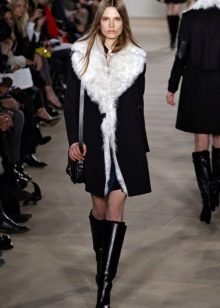

It is worth saying that, depending on the age of the animal, the fur of a sheepskin coat can look completely different. So, to get the effect of "curls" use the fur of lambs under the age of 3 days.
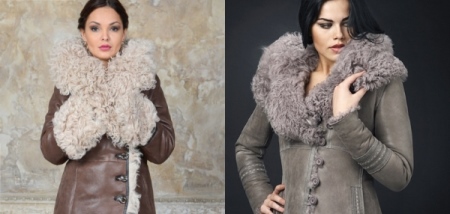
Popular styles and models
There are many models of sheepskin coats, because the demand for them is great. For late autumn or spring, a lightweight sheepskin model is chosen. It is quite light and at the same time warm in chilly weather. Sheepskin coats on a thick sheepskin with a dense structure will be an excellent option for winter.



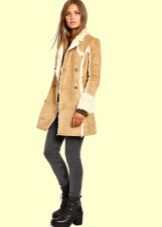
Another type of sheepskin coat for the off-season is thin sheepskin coats. This model is distinguished by a special dressing of sheepskin. As a result, the resulting thin fabric can take any form, for example, a sheepskin coat in the style of "leather jackets" or aviator jackets. Light sheepskin coats are sewn from the skins of young lambs.
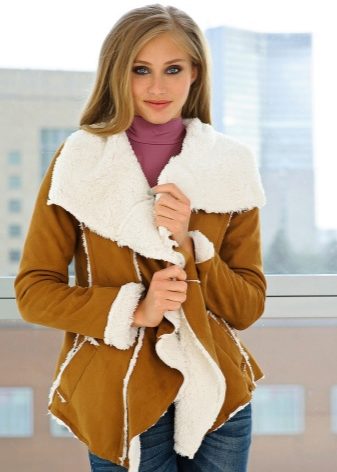
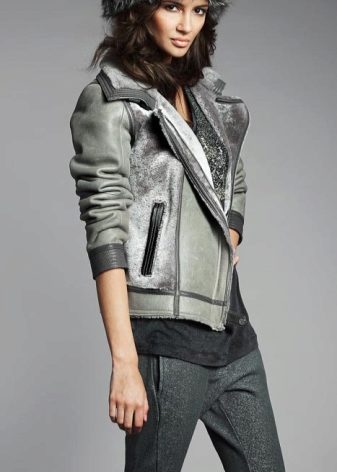
No matter how beautiful the skin of an animal is, over time it is doomed to aging. To avoid such an outcome, the material is coated with a special coating. It protects the sheepskin coat from water and dirt, putting it on a par with practical down jackets.
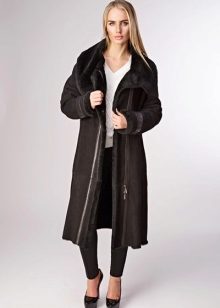
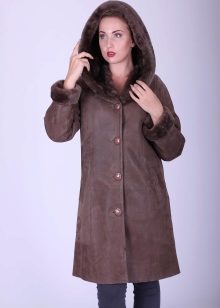

Needless to say, but a sheepskin coat is much more expensive than down jackets. Wanting to buy not one, but two different models for such a price, fashionistas are carefully looking at double-sided models. They can be worn both coated and fur-out.

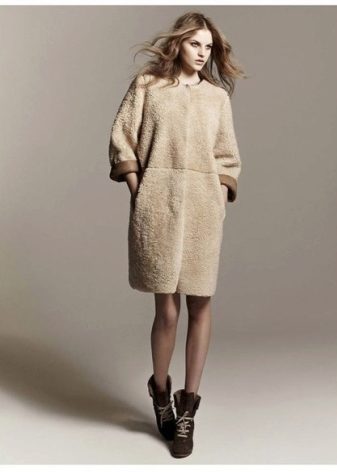
Speaking of styles, it is worth noting their diversity. The classic fitted version with a hood is especially popular here. Became a classic and a trench coat with a turn-down collar.
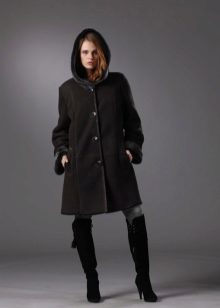
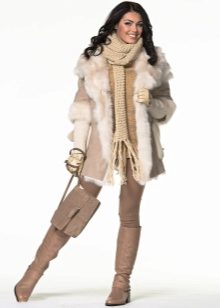
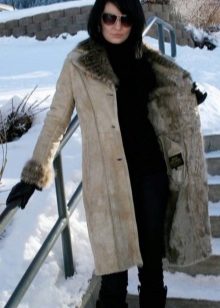
But for active girls, the “autolady” and “leather jackets” models will be an excellent alternative to long sheepskin coats. The latter have a diagonal zipper and look no less stylish than a leather competitor. The “autolady” style combines shortened sheepskin coats of a straight, fitted and flared style.
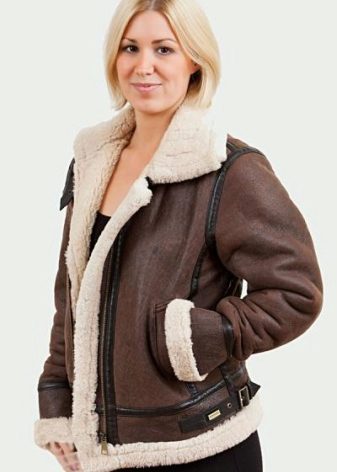
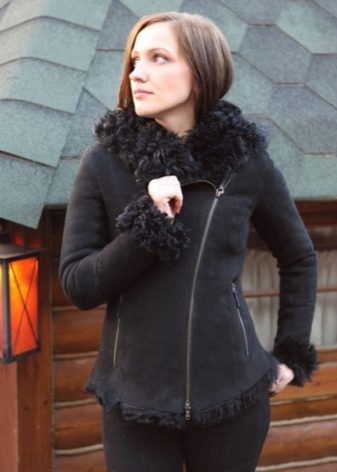
The option of supplementing a sheepskin coat with luxurious furs is at the peak of popularity today. The hood, collar, pockets or fur, passing through the central part of the sheepskin coat, are decorated with fox, arctic fox, raccoon fur and other species rich in texture. The fox often becomes an addition to a brown or red sheepskin coat. The result is worth saying, exceeds all expectations. Volumetric fox fur looks harmonious on a smooth sheepskin coat and does not cause additional volume.

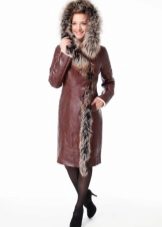
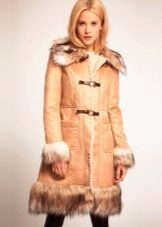

Materials and finishes
Among the coverings of sheepskin coats, suede and leather are distinguished. Suede or the so-called "leather velor" is created by delicately cutting and polishing the surface, after which the product is painted. “Under the skin” is a glossy, matte or lacquered finish that imitates any kind of skin and even a reptile.
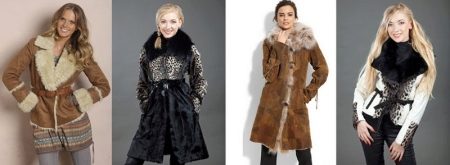
There are three main types of coatings:
- nappalan - leather surface;
- crack - impregnation that creates a pattern of "flakes";
- pull-up - used in the manufacture of sheepskin coats.
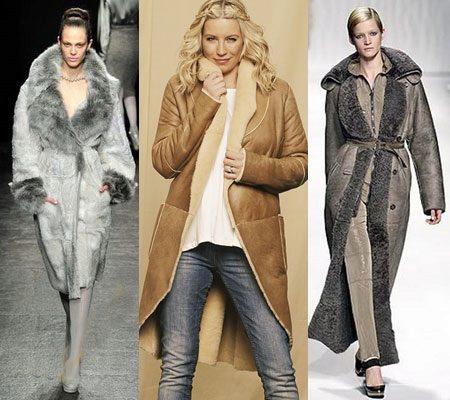
However, even the most advanced coating will not be able to protect the skin from aging if its quality leaves much to be desired.
The classic material for tailoring is sheepskin. Among them, Tuscan sheep are one of the most popular and expensive breeds. Their fur is thick and long, which is why it is unusually warm.
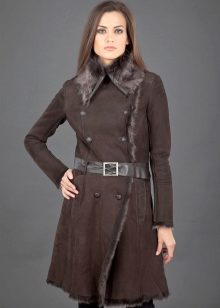


Sheepskin coats made of astrakhan have a special elegance. The skins of lambs have elastic curls, giving the product a skillful look. For frosty weather, this option will not be suitable.
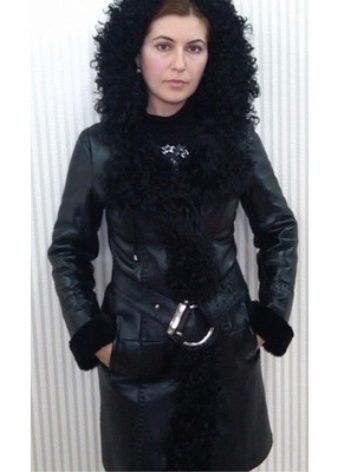
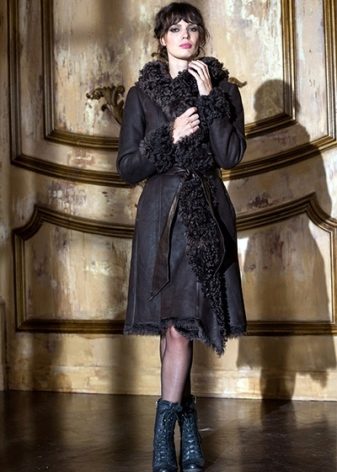
Sheepskin coat from a goat is not a very common option. However, completely in vain. The skin of a goat has greater elasticity and looks great in any style and shape.
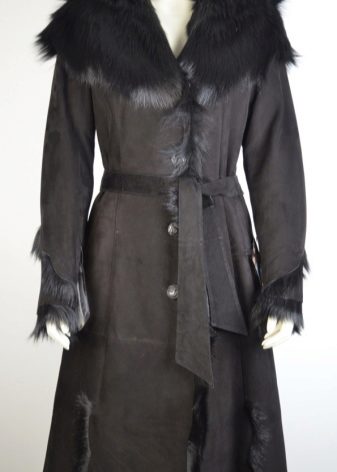
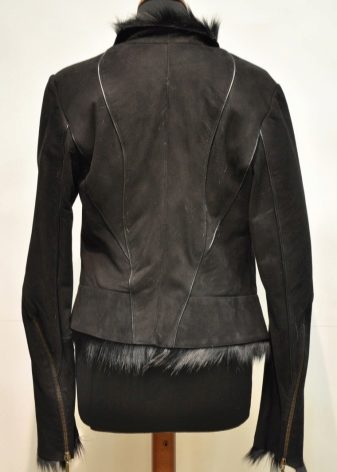
Trendy colors
Materials for sheepskin coats perfectly withstand staining. It is not surprising that due to this property many interesting models are born.
The black sheepskin coat of them is the most common type. This color in combination with black fur looks organically in classic and casual models. However, if you have to recreate a youthful look, add rich colors to black, for example, in the form of a delicious orange-colored scarf.
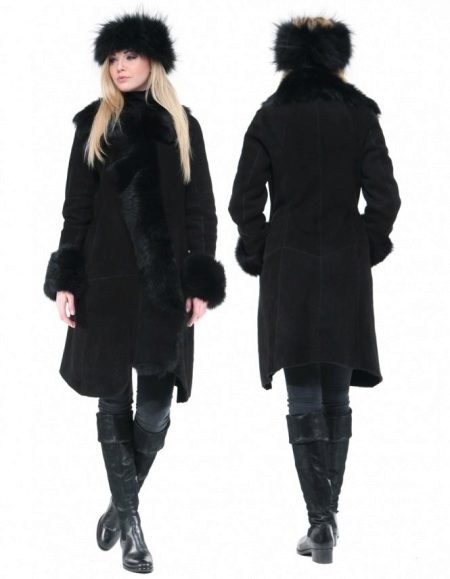
A more casual option among black sheepskin coats is a model with a white sheepskin. It goes well with jeans and trousers and is appropriate in a casual style.
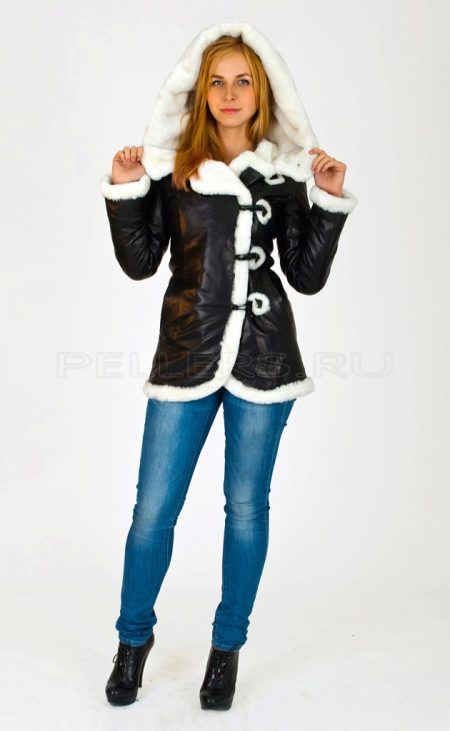
White color can be present not only in fur, but also become an original solution for the overall tone of the model. However, the most practical model will be a beige, mint and cream sheepskin coat.
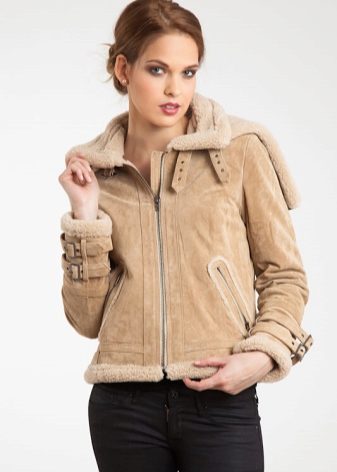
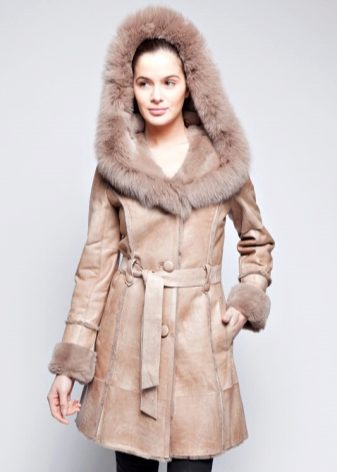
Brown and red sheepskin coats with white sheepskin are a classic of sheepskin coats. They are appropriate in everyday and youth style, go well with jeans and knitted dresses. At the same time, their appearance remains very colorful.
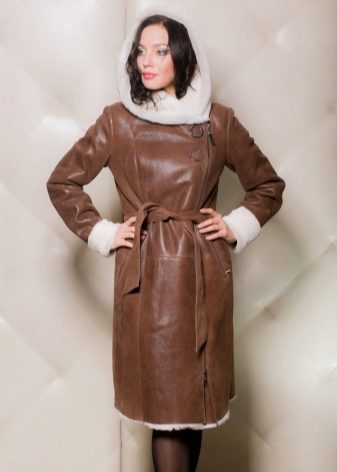
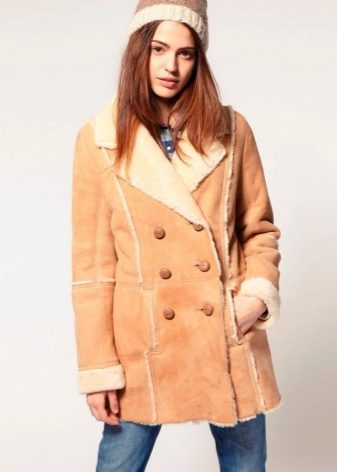
For bright natures, designers offer brightness of shades. For example, a blue sheepskin coat looks feminine and stylish if complemented with accessories in heavenly colors.
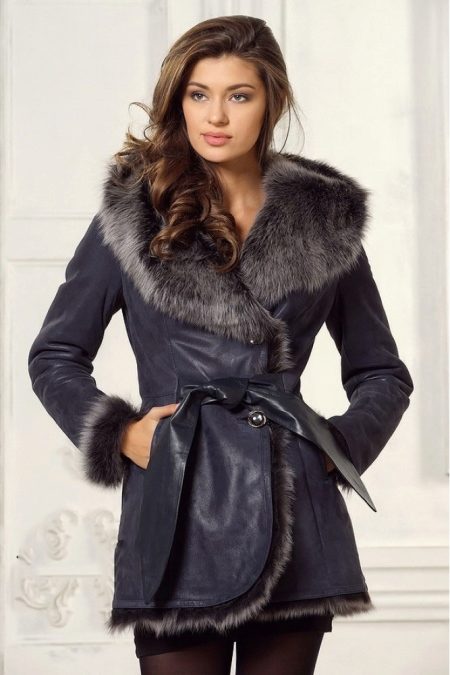
Length
The length affects the image and mood of the sheepskin coat. So, long models that cover the ankles look feminine and restrained. They form a fashionable alliance with high heeled suede boots.
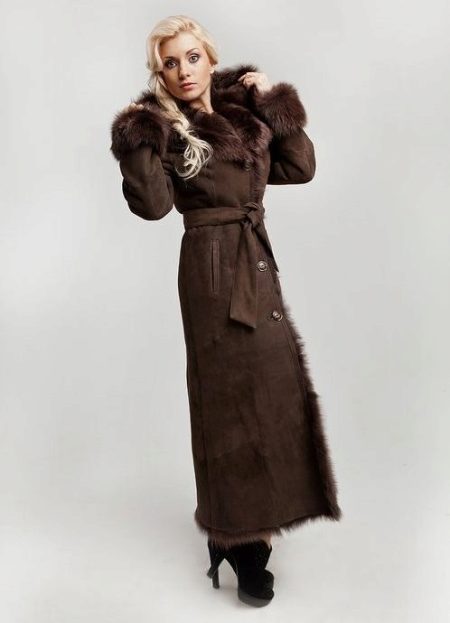
Shortened models to the knees and a little higher represent the most popular segment. They are warm and comfortable, convenient in transport and on long walks.
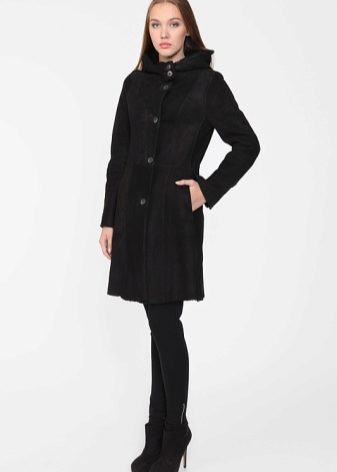

Short sheepskin coats are presented in the “autolady” style. Covering the hips, slightly covering the buttocks or models ending at the waist line, they are comfortable when driving and they are not afraid of abrasion. Sheepskin jackets "under the skin" are especially characteristic of short styles.
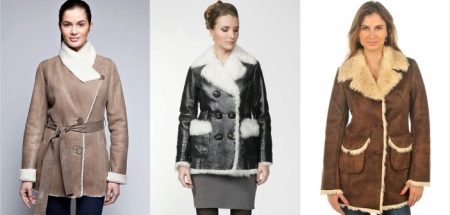
How to choose
A quality product does not wrinkle and does not have any bends and creases even after transportation. Squeeze a small area of the sheepskin coat for a few seconds, then check its reaction. If there is no wrinkle, then the first step to buying a good sheepskin coat has been taken.

Sheepskin coat should be soft and smooth, its color should be even.
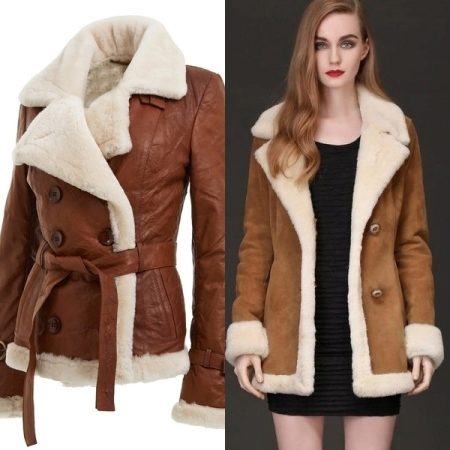
Look at the fur too. If it is natural and you choose for frosty weather, choose domestic and Australian manufacturers. Their materials are more dense and warm. Spanish sheepskin coats are more plastic, but less warm.
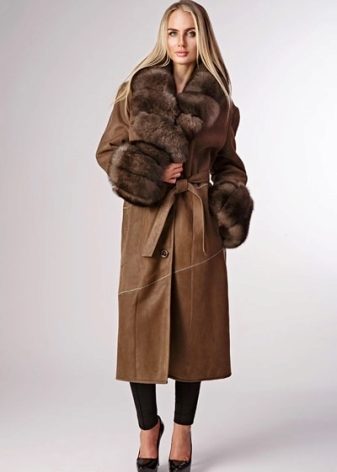
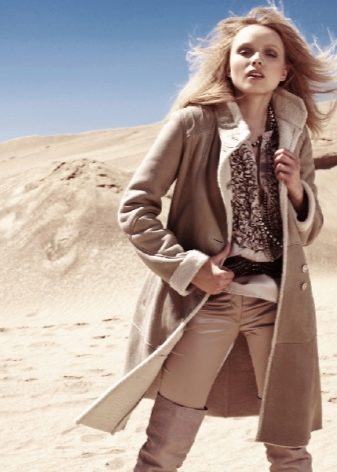
And, of course, in a sheepskin coat it is important to feel like a queen. The feeling of one's own beauty and grace is an important criterion in choosing the perfect sheepskin coat.
